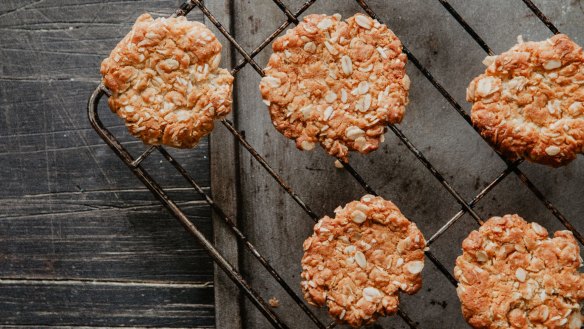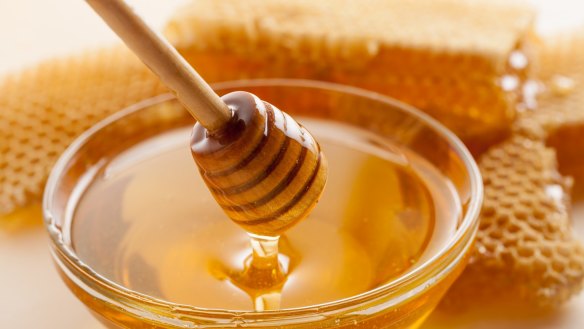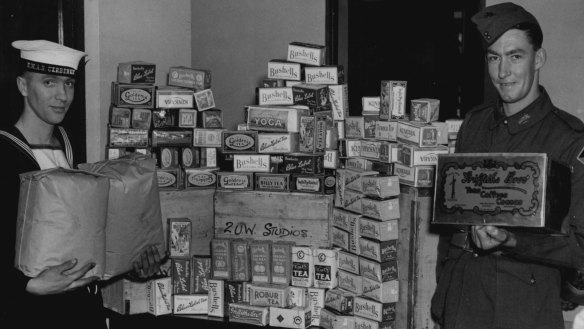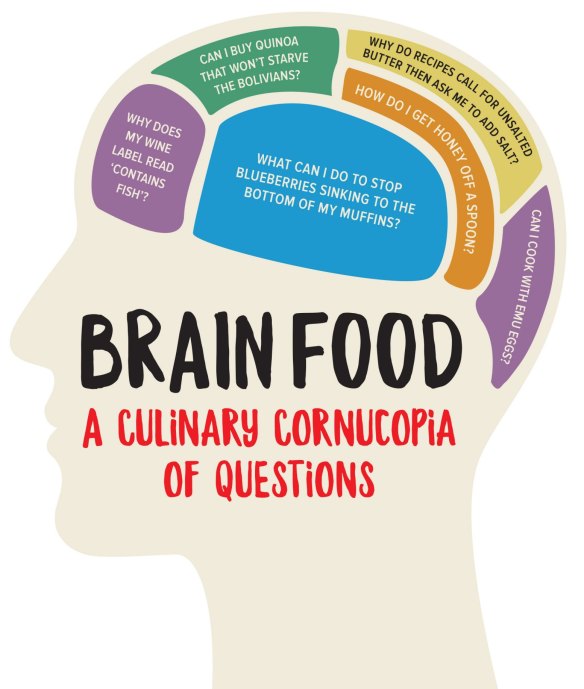Tips and tricks for the perfect Anzac biscuits

When making Anzac biscuits, I find it hard to measure out golden syrup accurately in tablespoons as directed by the recipe. M. Rowe
When I was 14, I worked for a non-compromising cook from Lancashire. She loathed waste and hated seeing junior cooks spreading golden syrup across ourselves and the kitchen. She taught us various ways around getting sticky golden syrup out of a tablespoon using a smaller spoon.

When flavour didn't matter that much, she would spray the spoon with kitchen spray. The golden syrup didn't stick. When she found out aerosols were depleting the ozone layer, she reverted to heating the bowl of a metal measuring spoon over the vent of the oven. The hot bowl of the spoon would make the syrup runny. The other method she adopted was to weigh the syrup.
While a cup of water weighs 250 grams, a cup of golden syrup or honey weighs about 320 grams. She would place the bowl of ingredients on the scales and carefully pour the golden syrup directly into the bowl. A tablespoon of honey or golden syrup weighs slightly more than 20 grams.
I made what I thought were Anzac biscuits but one of my guests informed me what was sent over to the troops was made to a completely different recipe. J. Naiditch

A few years ago an exhibition at the Victorian State Library called Gusto! displayed items from its collection to paint a picture of that state's history through food and wine. Many marvelled at items ranging from drawings of Aboriginal men hunting possums to original Vegemite jars. What struck many was a square, flat biscuit, made in Britain, and given to an Australian soldier in World War I. He wrote on the biscuit in pen: "A Soldier Has to Have Good Teeth", and sent it home to his family. The biscuits were not meant to be eaten like a cracker but were ground or broken up and cooked into a gruel. Arnott's made the Australian version, known as the Anzac wafer or Anzac tile. They were square, hard and dry according to a recipe provided by the Australian War Memorial, and made with flour, wholemeal flour, sugar, powdered milk, salt and water. The dough was very well worked, rolled into eight-millimetre-thick "tiles" and baked at 200C for 40 minutes.
A Catholic padre serving at Gallipoli, Father John Fahey, wrote that "the man who invented the army biscuit was an unmitigated rascal ... there is little to choose between it and a seasoned jarrah board". Women back home made a more edible treat to a Scottish recipe with oats, sugar, plain flour, coconut, butter, golden syrup or treacle and bicarb of soda. They were called soldiers' biscuits but after Gallipoli were renamed Anzac biscuits.
Is it OK to use honey in Anzac biscuits? W. Duggan

If I were a bureaucrat working with the Department of Veterans' Affairs I would come down on you like a tonne of bricks if you did. You can't call a baked good an "Anzac biscuit" unless it conforms to one of the three official recipes as listed by the Australian War Memorial, none of which has honey. They stipulate sugar or golden syrup. Honey, however, is a superior sweetener to either golden syrup or sugar, particularly if one were to be posting a box of biscuits, along with some local newspaper cuttings and warm knitted socks, to a homesick soldier or nurse entrenched in a war on the other side of the world. Honey is a natural invert sugar. It is made up of glucose and fructose and doesn't crystallise or absorb water like sugar does. Therefore baked goods made with honey keep longer. Golden syrup is almost half invert sugar and half sucrose so is almost as good as honey. Personally I don't think it matters as long as you bake enough, share them around and appreciate what others had to go through in the past, far, far from home.
Why do oats taste better with salt? S. Hurley
What's that Scottish expression? "Nothing under the kilt except potential and nothing on the porridge except salt." I think that is the right way around. Me, I love a tiny bit of salt with oats. I put it in Anzac biscuits, in porridge and even in my muesli. The salt masks the bitterness of the oats. Oats are very low in salt. Salt depresses the tastebuds' ability to detect bitterness. Oats are also around 8 per cent fat and as this fat slowly oxidises it becomes rancid. There are compounds in older oats called avenanthramides and saponins that give an astringent and bitter off-taste. Most oats are stabilised by steaming. This knocks out an enzyme called lipase that would otherwise break down the fats very quickly. Unstabilised oats marketed to the health-conscious consumer have a much shorter shelf-life and develop these bitter-tasting compounds more quickly. Keep all oats fresh by storing them in a tightly sealed jar away from light.
What did the Anzacs eat and drink? P. Menert
During WWI, the food supply chain stretched so far around the world it almost snapped. It saw Australian and New Zealand front-line soldiers eating a lot of tinned products from milk to jam to beef. They also ate a lot of "army biscuits". The army biscuit was equivalent to naval hard tack with the texture of a modern dog biscuit but less nourishing. One soldier wrote, "crawling from our earthly dens at the dim dawnings of the day, we receive no portion of the dainties which once were ours in the long ago times, but instead devour with eagerness biscuit porridge".
The army biscuits were crushed and turned into gruel or used to thicken a stew made with canned beef. Then there were the biscuits baked by mothers and aunts back home. Made with oats and golden syrup, they made the long journey over the equator without going stale because golden syrup is an invert sugar and doesn't absorb moisture from the air like normal sugar. Moisture from the air makes baked goods taste stale. The golden syrup also stopped the formation of moulds. We know soldiers in France were drinking the local white wines as they bought back a word derived from the French vin blanc that we still use today, "plonk".
Send your vexing culinary conundrums to brainfood@richardcornish.com.au or tweet to @Realbrainfood.
Brain Food by Richard Cornish is out now from MUP (RRP $19.99, eBook $11.99).
Appears in these collections
- More:
- Food
- Brain food
